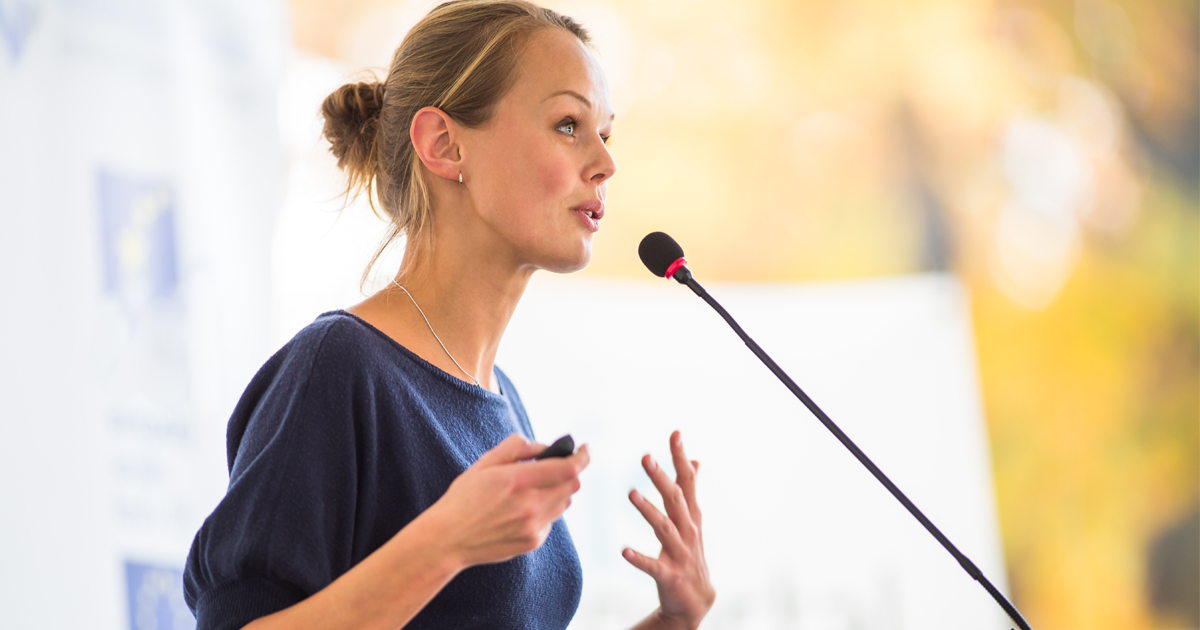Breaking Down the 4 Pillars of Self-Efficacy: Part I

While women’s entrepreneurship is on the rise, a major success gap remains in the perceptions of new entrepreneurs: only 46% of women believe they have the skills and knowledge needed to start a business, compared to 61% of men.
This belief as to whether an individual has the abilities perceived as central to their success is known as self-efficacy. And, self-efficacy plays a major part in determining our chances for success; in fact, some psychologists rate self-efficacy above talent in the recipe for success. Babson College’s Women Innovating Now (WIN) Lab® breaks down four pillars of self-efficacy in a four-part series. Don’t miss parts II, III, or IV to explore more about building entrepreneurial women leaders.
Part I: Vicarious Experiences
The gender gap in self-efficacy is not an individual problem—it is an ecosystem problem, and one way to build a robust ecosystem for women entrepreneurs links directly with one of the four pillars of self-efficacy: vicarious experiences. By seeing people similar to ourselves succeed, we are able to raise our beliefs that we, too, possess the capabilities to master the activities needed for success. In this case, we focus on success in entrepreneurship.
“Before starting my company, I didn’t have anyone whom I could look up to or turn to in hard times and successful times. It’s been incredibly impactful to have mentors with you through the journey who have been there before and who can help you on both the business side and personal side of starting a company.”
All people can develop self-efficacy by having the opportunity to witness and engage with the experiences of others who are similar to them, especially people whom they consider to be role models. As they look at these role models and compare their circumstances and experiences, they often will evaluate their abilities, motives, and possible actions, because they can see themselves, and their potential future and success, in that aspirational figure.
But, what happens when women entrepreneurs don’t have those role models to compare themselves to? Especially when we know that role models have a greater impact on a woman’s entrepreneurial self-efficacy than on a man’s? In today’s reality, female CEOs receive only 3% of venture capital funding and 20% of angel funding, creating a dearth of women founders who have the resources to build scalable companies. Compound that lack of role models with the research that women often wait until they believe themselves to be 100% qualified to move forward, while men consider themselves ready much sooner. The result is that while women are overpreparing, men are taking advantage of opportunities for which women are equally qualified.
Seeing role models take actionable steps when they may not have all of the answers and watching them build successful companies allows female founders to see that future for themselves. We must, then, continue to create opportunities for women to see their potential future selves. Whether on the covers of magazines, or in their own tribes, increasing self-efficacy through vicarious experiences is an important step to building the next wave of women CEOs who will create economic impact and bolster their communities. At Babson, the WIN Lab cultivates vicarious experiences by pairing its WINners with more than 275 experts and coaches each year. These successful women help build participants’ self-efficacy by acting as role models, sharing their stories, and offering invaluable insights about their entrepreneurial journeys.
Posted in Insights





